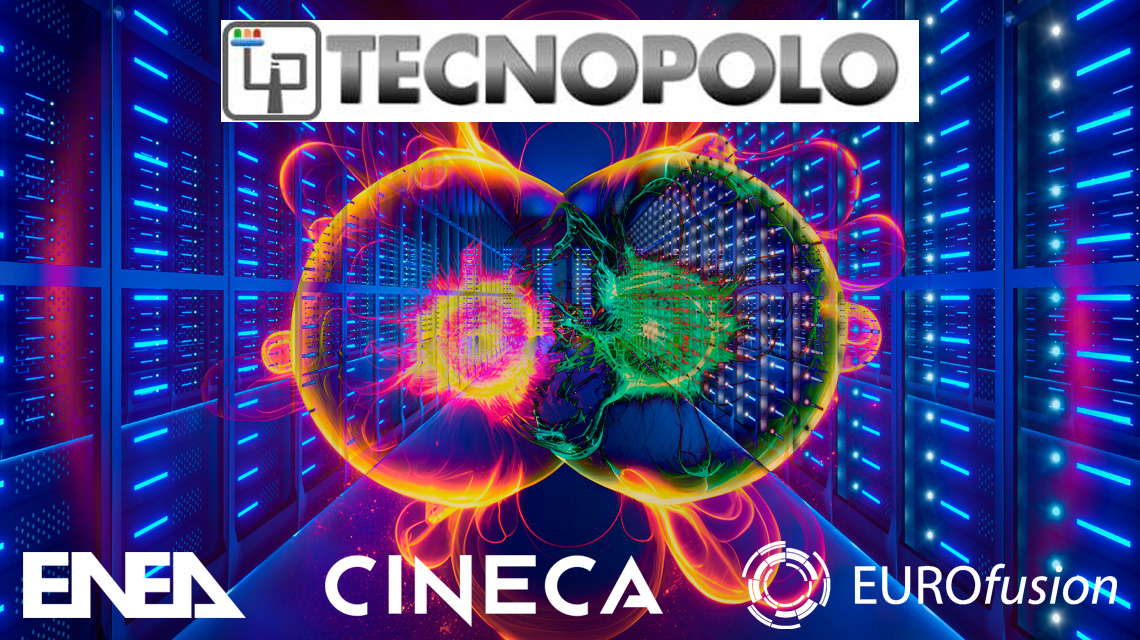Italian National Agency for New Technologies, Energy and Sustainable Economic Development

Fusion Energy Research: ENEA, EUROfusion and Cineca signed agreement to develop a new 50 million euro supercomputing service in Italy
The new HPC facility will bridge the EUROfusion scientific community to the Italian ecosystem of international relevance and strategic importance for Europe in Bologna Tecnopolo, sitting alongside the computing facilities for weather and climate forecasts of the European center ECMWF and the European supercomputer Leonardo of the Joint Undertaking EuroHPC.
The agreement, signed by ENEA Department Director of Fusion and Nuclear Safety Technologies Alessandro Dodaro, President of CINECA Francesco Ubertini, and EUROfusion Programme Manager (CEO) Tony Donné, forsees the deployment of a 47 petaflops supercomputer consisting of a general purpose partition (13.6 petaflops) and an accelerated partition (33.7 petaflops), as well as an additional smaller computing system. This will be complemented by support activities enabling the European fusion scientific community to make best use of these systems in their research.
“We are delighted with the implementation of this advanced High-Performance Computing infrastructure, which will help to reinforce our position as leaders in fusion energy research", said EUROfusion Programme Manager, Tony Donné. "We are equally pleased to continue our fruitful partnership with ENEA and CINECA in the provision of HPC resources to the EUROfusion community. This collaboration has enabled groundbreaking research and innovation and we look forward to further advancements together”.
“With this new project CINECA confirms itself internationally as one of the most important supercomputing centers and the ecosystem of Bologna Technopole as one of the largest concentrations of high-performance computing systems worldwide," pointed out CINECA President Francesco Ubertini. "This agreement”, he adds, "is the continuation of a collaboration begun in 2016 to extend a partition of the Marconi supercomputer to the nuclear fusion science community. In 2020, the Marconi system was ranked among the top 10 most powerful in the world, paving the way for the realization of the Leonardo project, now ranked 4th in the world, and the creation of this new supercomputer dedicated exclusively to fusion research”.“With this agreement ENEA and CINECA strengthen their role internationally in the provision of high-performance computing services for fusion energy research”, stated Alessandro Dodaro, director of ENEA's Department of Fusion and Nuclear Safety Technologies and the Agency's contact person for the agreement. "In order to adequately respond to the needs of the EUROfusion community," he adds, "the ENEA Department of Energy Technologies and Renewable Sources, together with the Division for the Development of Systems for Information and Communication Technologies, have contributed to elaborate technical specifications based on the most modern and innovative computing architectures”.
Fusion Energy
Fusion is the so-called 'energy of the stars'. European fusion researchers aim to use the same process to safely and 'cleanly' produce energy on earth. This technological and scientific challenge may make it possible to move away from fossil fuels and even reverse climate change. The fusion reaction was first reproduced in the 1950s and since the 1960s experiments have been continuously carried out to establish the foundations for a fusion power plant. The largest international fusion research project is ITER, currently under construction in Cadarache, France. ITER is a collaboration between seven parties (European Union, China, India, Japan, South Korea, Russia and the United States) representing 50 percent of the world’s population and 85 percent of global GDP. The goal is to demonstrate the feasibility of fusion energy production at commercial scale and to demonstrate the integration of technologies necessary for power plant applications. Italy is contributing to the path toward fusion energy with the DTT (Divertor Tokamak Test) project, the machine under construction at ENEA Research Center in Frascati (Rome).
Partners
CINECA, an Interuniversity Supercomputing Consortium based in Casalecchio di Reno (Bologna), is the largest computing center in Italy. Founded in 1969 on a not-for-profit basis, it is made up of more than 100 public research organizations (Italy's public universities, major national research organizations and institutes) with the Ministry of Education and Merit and the Ministry of University and Research. For more than fifty years it has been providing support to the research activities of the scientific community through supercomputing and its applications thanks to one of the most powerful technological infrastructures in the world. It builds management systems for university administrations and the MUR and also designs and develops information systems for business, health care and public administration. www.cineca.it
ENEA is the National Agency for New Technologies, Energy and Sustainable Economic Development, which has about 2,300 employees located in various research centers throughout the country. In its role as coordinator of the national fusion research program and partner of the European Agency Fusion for Energy (F4E) and the EUROfusion Consortium, ENEA contributes to major international programs in the field, including the Euro-Japanese Broader Approach project as well as DTT, ITER and DEMO. www.enea.it
EUROfusion is the European Consortium for the Development of Fusion Energy. Currently 31 research organizations from 29 European countries, and behind them some 164 affiliated entities including universities and companies, participate in this programme. Established in 2014, EUROfusion coordinates fusion research activities among European laboratories on behalf of Euratom. www.euro-fusion.org
